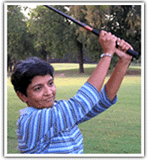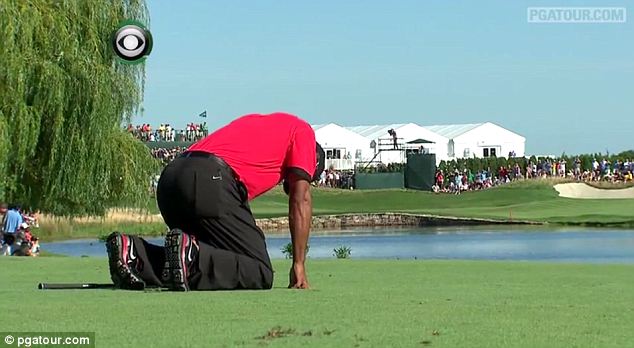Exclusive report by Kirwan Kanwal.

Kiran Kanwar
Tiger Woods’ last injury was a lower back complaint. As was Ernie Els’.
In fact, Dr Monte Hessler, chiropractor to the PGA Tour, says some 50-75% of the entire field will visit the physiotherapy van during any given week on Tour.
What is the cause of this epidemic of injuries, especially low-back ones?
According to Hessler, who practices out of Scottsdale and specializes in sports-specific injury, there are two main golf swing movements which he sees as being the cause for most low back pain.
The downswing counter-rotation, in which the different areas of the spine, starting from the hips to the thorax and upwards, creates large torsional stresses on the thoraco-lumbar region.
Also, many tour players are unable to rotate their lead hip area during the downswing, so have to forcefully power through with the trail-side gluteal muscles, which creates a lot of sacro-iliac and lumbar-region stress. A quick meeting with Ryo Ishikawa revealed that he is attempting swing changes to counter the fact that his downswing has more slide than rotation.
What is the cause of all this low back pain and injury in professional golfers? Typically it is claimed to be over-use, but truly, a trained eye can tell that it is poor-technique as much as overuse. Can it be possible that a Tour player, a top global performer, can be so good and still be considered to have poor mechanics? Yes. However, only a very keen eye, one with training in musculoskeletal anatomy and how human joints work, can hope to notice the issues.

Tiger Woods clearly in agony over the last round of the 2013 Barclays. (Photo – www.pgatour.com)
Consider the sequencing issue causing thoraco-lumbar stress. If a backswing is supposed to have maximal thoracic twisting (a part of the body carrying the ribs and actually designed to not move too much) with restricted lumbar and pelvic rotation, it all has to be undone – somehow – during the downswing, creating torsional loading. To that motion add the side-bend or lateral flexion of the trail side which has to drop down during the downswing and one adds compressive (pushing two bones together) loads to the rotational ones.
Next is the problem of a loss of lead side hip-rotation muscles, which are unable to rotate freely through. This could actually not be as much the tight muscles as the thoracic-without-lumbar rotation of the backswing, along with the side bending motion just described. The gluteals could be tight just acting as stabilizers during the un-necessary lead-side lateral flexion. The problem could also arise because of the modern trend for coaches to tell their players to make a squat-jump type motion during the downswing. This motion happens with the hips remaining parallel to the target line, thus leaving no time for the lead hip to rotate and the trail one is then forced to just bludgeon through.
An over-the-top downswing, created by the inability of the golfer to have his trail shoulder in the appropriate position at the top, can also prevent the lead hips from rotating through.
In other words, the best players are as susceptible to poor-technique as casual golfers, only, golf science – particularly that which applies to the body’s movement capability, is not a subject known or understood by either players or by most of their coaches.





